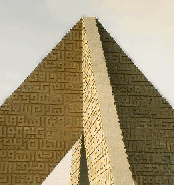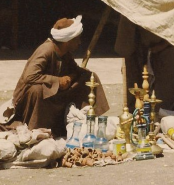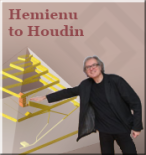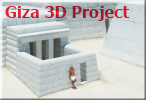 There is no shortage of theories about how the Great Pyramid of Pharaoh Khufu was constructed, but so far they have all failed in various respects. From ramps that are as large and difficult to construct as the pyramid itself, to ramps that by their nature would make its construction even more difficult, we can’t even really explain how the blocks were moved into place.
There is no shortage of theories about how the Great Pyramid of Pharaoh Khufu was constructed, but so far they have all failed in various respects. From ramps that are as large and difficult to construct as the pyramid itself, to ramps that by their nature would make its construction even more difficult, we can’t even really explain how the blocks were moved into place.
But a French architect by the name of Jean-Pierre Houdin may be changing that. He has put forth the first comprehensive explanation of how the Great Pyramid was built that stands the tests of physics and common sense, and his work continues to gain support from prominent architects, engineers, and Egyptologists.
Jean-Pierre has kindly agreed to work with Em Hotep! to put his theory into terms that are accessible to those of us who may not be professional architects or engineers, but who may be amateur and professional Egyptologists of varying degrees. In Part One we take a close look at the evolution of ramp theories, how they work and fail to work, and what was involved with building the only remaining Wonder of the Ancient World.


 Originally commissioned by President Anwar Sadat to memorialize the soldiers who died in the October 1973 War, the President himself would die within sight of the memorial, which would become his final resting place.
Originally commissioned by President Anwar Sadat to memorialize the soldiers who died in the October 1973 War, the President himself would die within sight of the memorial, which would become his final resting place.  In the last photo essay I posted, I stated that Egypt’s most important natural resource was her history. That was incorrect.
In the last photo essay I posted, I stated that Egypt’s most important natural resource was her history. That was incorrect.  The number one natural resource in Egypt is history. Unlike its oil-rich neighbors, the Egyptian economy relies on the foreign money of tourists who fly into Cairo from all points of the compass to see colossal monuments, puzzle over cyclopean architecture, and experience walking where the ancients once lived out their days. This has resulted in an organic fusion of the very ancient with the ultra modern.
The number one natural resource in Egypt is history. Unlike its oil-rich neighbors, the Egyptian economy relies on the foreign money of tourists who fly into Cairo from all points of the compass to see colossal monuments, puzzle over cyclopean architecture, and experience walking where the ancients once lived out their days. This has resulted in an organic fusion of the very ancient with the ultra modern. 



























